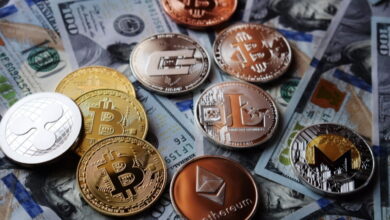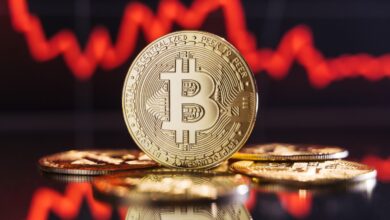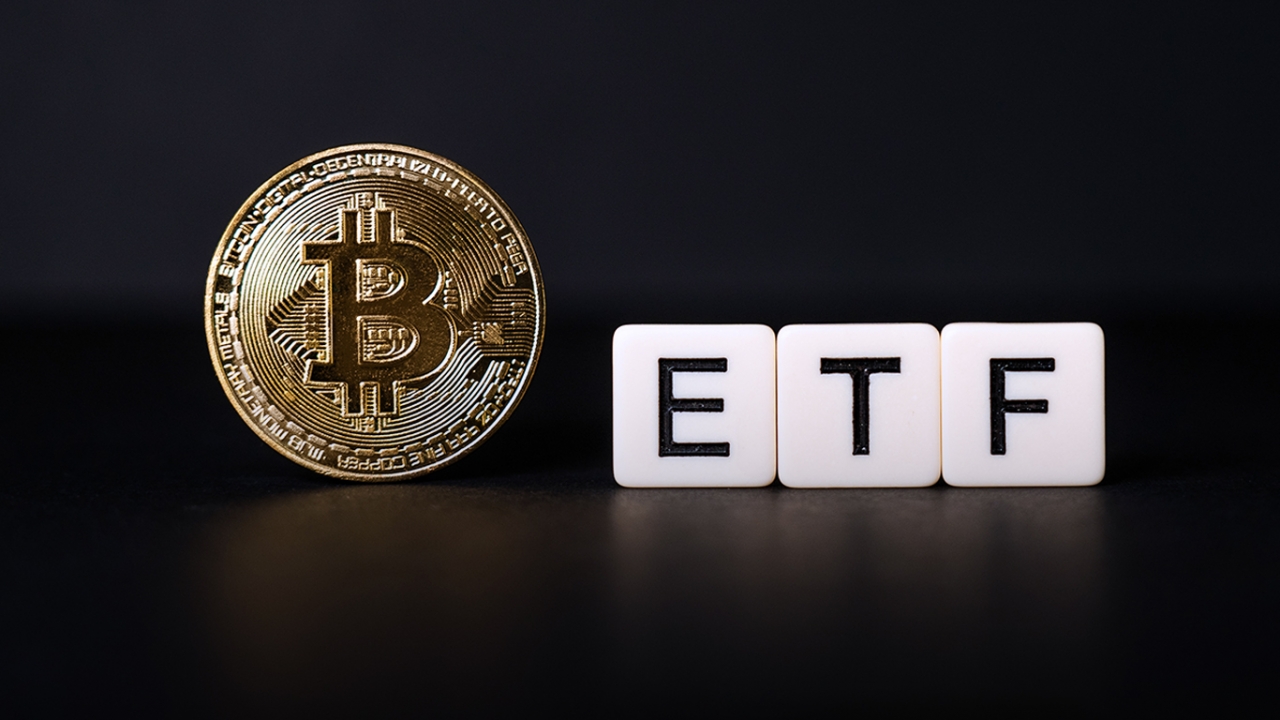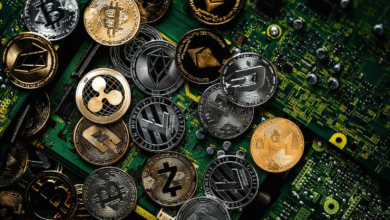Buy 10 Top Altcoins on Binance Ultimate Guide 2025
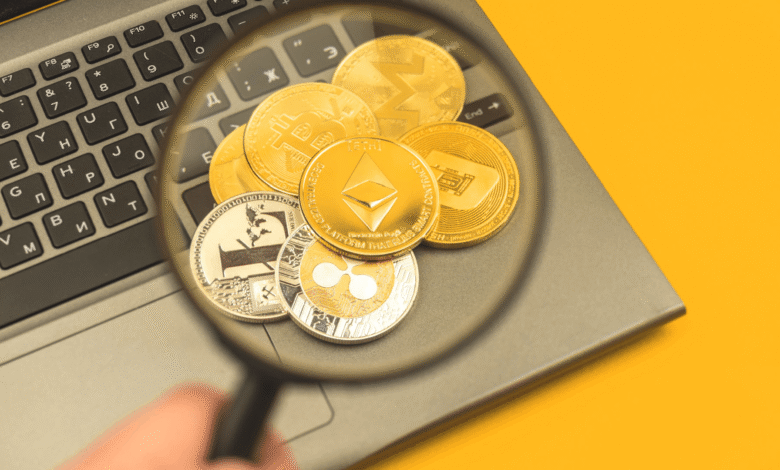
The cryptocurrency landscape in 2025 presents unprecedented opportunities for investors seeking to diversify beyond Bitcoin. With altcoins showing remarkable potential for explosive growth, Binance continues to dominate as the world’s largest cryptocurrency exchange, offering access to over 500+ digital assets and serving more than 280 million users globally. This comprehensive guide will walk you through everything you need to know about buying altcoins on Binance, from selecting the most promising projects to executing successful trades.
Altcoin season 2025 is creating significant buzz among cryptocurrency enthusiasts, as market analysts predict substantial gains in alternative cryptocurrencies. The current market conditions, combined with emerging trends like artificial intelligence, gaming tokens, Real World Assets (RWA), and Decentralized Physical Infrastructure Networks (DePIN), present unique investment opportunities for savvy traders. Whether you’re a beginner looking to make your first altcoin investment or an experienced trader seeking to expand your portfolio, understanding how to navigate Binance trading effectively is crucial for success.
Binance’s comprehensive ecosystem includes spot trading, futures markets, staking opportunities, and educational resources, making it the ideal platform for altcoin investors. With daily trading volumes exceeding $217 billion and access to more than 1,500 trading pairs, Binance provides the liquidity and security needed for successful cryptocurrency trading. This guide will cover the top 10 altcoins worth considering in 2025, detailed purchasing strategies, risk management techniques, and advanced trading tips to maximize your investment potential while minimizing exposure to market volatility.
Understanding Altcoins and Market Dynamics
What Are Altcoins
Altcoins, short for alternative coins, represent all cryptocurrencies other than Bitcoin. These digital assets have evolved significantly since Bitcoin’s inception, offering diverse functionalities, use cases, and technological innovations. In 2025, altcoins encompass various categories, including smart contract platforms, decentralized finance (DeFi) protocols, non-fungible token (NFT) ecosystems, and utility tokens powering specific blockchain applications.
The altcoin market has matured considerably, with many projects demonstrating real-world utility and adoption. Ethereum remains the dominant smart contract platform, while newer blockchains like Solana, Cardano, and Avalanche compete for market share with improved scalability and lower transaction costs. Stablecoins like USDT and USDC provide price stability and serve as trading pairs for other altcoins, facilitating seamless cryptocurrency trading on platforms like Binance.
Market Trends in 2025
The 2025 cryptocurrency market is characterized by several key trends that are driving altcoin adoption and investment. Artificial intelligence integration has become a major narrative, with AI-focused tokens gaining significant traction among investors. Gaming and metaverse projects continue to attract attention as virtual worlds become more sophisticated and mainstream adoption increases.
DeFi protocols have reached new levels of maturity, offering institutional-grade services and attracting traditional finance participants. Real World Asset (RWA) tokenization is revolutionizing how physical assets are represented on blockchain networks, creating new investment opportunities in altcoins that bridge traditional and digital finance. Additionally, Decentralized Physical Infrastructure Networks (DePIN) are gaining momentum as projects aim to decentralize internet infrastructure, data storage, and connectivity services.
Why Choose Binance for Altcoin Trading
Platform Advantages
Binance has established itself as the premier destination for altcoin trading due to its unparalleled combination of security, liquidity, and feature diversity. The platform’s robust infrastructure handles massive trading volumes while maintaining 99.99% uptime, ensuring traders can execute transactions when market opportunities arise. Binance’s comprehensive security measures include multi-tier architecture, cold storage for user funds, and advanced encryption protocols that protect against potential threats.
The exchange offers competitive trading fees, with spot trading fees as low as 0.1% and additional discounts available for BNB holders. Binance’s deep liquidity pools ensure minimal slippage when trading altcoins, making it ideal for both small retail investors and large institutional traders. The platform’s user-friendly interface caters to beginners while providing advanced charting tools and trading features for experienced traders seeking sophisticated analysis capabilities.
Regulatory Compliance and Global Access
Binance has made significant strides in regulatory compliance across various jurisdictions, obtaining licenses and approvals in multiple countries to ensure legal operation and user protection. The platform’s commitment to regulatory adherence provides users with confidence when buying altcoins and trading digital assets. Binance’s global presence allows investors from different regions to access a wide range of altcoins while complying with local regulations and requirements.
The exchange’s Know Your Customer (KYC) and Anti-Money Laundering (AML) procedures align with international standards, creating a secure trading environment for legitimate users. Binance’s transparency in reporting and regular security audits demonstrates its commitment to maintaining the highest industry standards for cryptocurrency trading platforms.
Top 10 Altcoins to Buy on Binance in 2025
1. Ethereum
Ethereum remains the undisputed leader in smart contract functionality and serves as the foundation for most decentralized applications (dApps) and DeFi protocols. The network’s ongoing upgrades, including the transition to Ethereum 2.0 and implementation of EIP-1559, have improved scalability and reduced transaction costs. ETH benefits from strong developer adoption, with thousands of projects building on the Ethereum ecosystem.
Buying ETH on Binance provides exposure to the largest smart contract platform and the growing DeFi sector. Ethereum’s network effects create significant barriers to entry for competitors, while layer-2 solutions like Polygon and Arbitrum enhance its scalability without compromising security. The platform’s role in NFT markets and its position as a store of value for the crypto ecosystem make ETH a fundamental holding for any altcoin portfolio.
2. Binance Coin
BNB serves as the native utility token for the Binance ecosystem, offering multiple benefits including reduced trading fees, participation in token sales, and access to exclusive features. The token’s deflationary mechanism through quarterly burns reduces the total supply over time, creating potential upward pressure on prices. BNB’s utility extends beyond the Binance exchange to power the BNB Smart Chain (BSC), a popular blockchain platform for DeFi and gaming applications.
The token’s integration across Binance’s expanding ecosystem, including Binance Pay, Binance Card, and various financial services, creates sustained demand for BNB. As Binance continues to grow its user base and launch new products, BNB holders benefit from increased utility and potential appreciation. The token’s strong fundamentals and direct correlation with Binance’s success make it an attractive investment for users of the platform.
3. Solana
Solana has emerged as a leading Ethereum competitor, offering high throughput, low transaction costs, and innovative consensus mechanisms. The network’s Proof of History (PoH) protocol enables fast transaction processing, making it ideal for high-frequency applications like DeFi trading and gaming. Solana’s ecosystem has experienced rapid growth, with numerous projects launching on the platform and attracting significant developer interest.
SOL token benefits from the network’s growing adoption and the increasing number of applications built on Solana. The platform’s focus on mobile integration and user-friendly experiences positions it well for mainstream cryptocurrency adoption. Solana’s partnerships with major brands and its role in the NFT space provide additional utility and demand drivers for SOL tokens.
4. Cardano
Cardano represents a research-driven approach to blockchain development, emphasizing peer-reviewed academic research and formal verification methods. The platform’s layered architecture separates computation from settlement, providing flexibility and scalability for various applications. Cardano’s focus on sustainability and energy efficiency appeals to environmentally conscious investors and institutions.
ADA serves as the native currency for the Cardano network, enabling staking, governance participation, and transaction fees. The platform’s smart contract capabilities, launched through the Alonzo upgrade, have opened new possibilities for DeFi and dApp development. Cardano’s strong focus on financial inclusion and partnerships in developing markets creates long-term growth potential for ADA holders.
5. Avalanche
Avalanche offers a unique consensus mechanism that provides near-instant finality and high throughput while maintaining decentralization. The platform’s subnet architecture allows developers to create custom blockchain networks optimized for specific use cases. Avalanche’s Ethereum Virtual Machine (EVM) compatibility facilitates easy migration of existing Ethereum projects, accelerating ecosystem growth.
AVAX token functions as the platform’s native asset, used for staking, transaction fees, and network governance. The token’s burning mechanism through transaction fees creates deflationary pressure, while the platform’s growing ecosystem drives demand. Avalanche’s partnerships with traditional finance institutions and its focus on institutional adoption position AVAX for significant growth potential.
6. Polkadot
Polkadot introduces a novel approach to blockchain interoperability through its relay chain and parachain architecture. The network enables different blockchains to communicate and share security while maintaining their unique features and governance structures. Polkadot’s sophisticated technology attracts serious blockchain projects seeking scalability and interoperability solutions.
DOT tokens serve multiple purposes within the Polkadot ecosystem, including staking for network security, bonding for parachain slots, and governance voting. The token’s inflation model rewards stakers and encourages network participation. Polkadot’s growing parachain ecosystem and its role in enabling Web3 infrastructure make DOT an important component of diversified altcoin portfolios.
7. Chainlink
Chainlink operates as the leading decentralized oracle network, providing real-world data to smart contracts across multiple blockchain platforms. The network’s critical infrastructure role in the DeFi ecosystem creates sustained demand for LINK tokens. Chainlink’s partnerships with major corporations and integration with various blockchain networks demonstrate its essential utility in the cryptocurrency space.
LINK tokens are used to pay for oracle services and incentivize accurate data provision by network operators. The token’s utility model creates continuous demand as DeFi protocols expand and require more oracle services. Chainlink’s first-mover advantage and network effects in the oracle space provide strong competitive moats for LINK token holders.
8. Cosmos
Cosmos focuses on blockchain interoperability through its Inter-Blockchain Communication (IBC) protocol, enabling different blockchain networks to communicate and transfer assets seamlessly. The platform’s hub-and-spoke model allows for scalable network architecture while maintaining sovereignty for individual blockchain projects. Cosmos’s developer-friendly tools and SDK facilitate rapid blockchain development and deployment.
ATOM tokens secure the Cosmos Hub through staking and enable governance participation in network upgrades and parameter changes. The token benefits from the growing Cosmos ecosystem as more projects launch their own blockchain networks connected to the hub. ATOM’s staking rewards and its role in the expanding interchain ecosystem provide multiple value accrual mechanisms for investors.
9. Polygon
Polygon serves as a Layer 2 scaling solution for Ethereum, providing faster and cheaper transactions while maintaining compatibility with Ethereum’s ecosystem. The platform’s various scaling technologies, including Polygon PoS, zkEVM, and other zero-knowledge solutions, address different scalability needs. Polygon’s strong partnerships with major brands and its role in NFT and gaming markets drive adoption and usage.
MATIC tokens are used for transaction fees, staking, and governance within the Polygon network. The token benefits from increased usage of Polygon’s scaling solutions as Ethereum gas fees remain high. Polygon’s continued innovation in zero-knowledge technology and its expanding ecosystem of projects create positive momentum for MATIC token appreciation.
10. The Graph
The Graph operates as a decentralized indexing protocol that enables efficient querying of blockchain data, serving as crucial infrastructure for DeFi applications and dApps. The network’s indexing services are essential for applications that need to access and display blockchain data in user-friendly formats. The Graph’s protocol facilitates the development of more sophisticated and data-rich blockchain applications.
GRT tokens incentivize network participants, including indexers, curators, and delegators who maintain the protocol’s functionality. The token’s utility model creates demand as more applications integrate The Graph’s indexing services. The Graph’s role as Web3 infrastructure and its expanding ecosystem of supported networks position GRT for growth alongside the broader blockchain ecosystem.
Step-by-Step Guide to Buying Altcoins on Binance
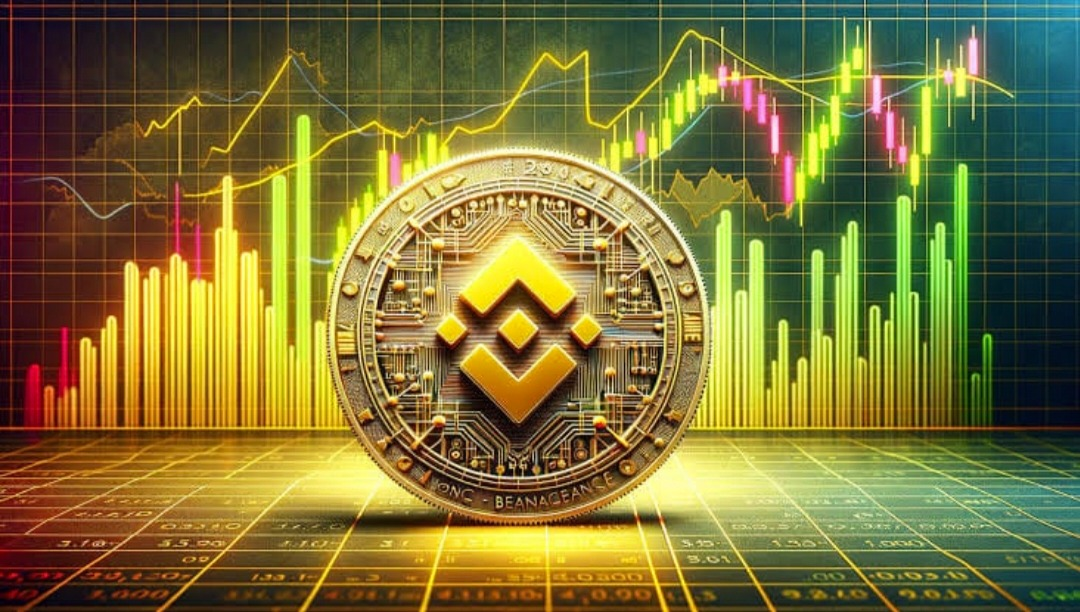
Account Setup and Verification
Creating a Binance account requires providing basic personal information and completing identity verification procedures. New users should visit the official Binance website and click the “Register” button to begin the signup process. The registration requires a valid email address and a secure password meeting Binance’s security requirements. Users should enable two-factor authentication (2FA) immediately after account creation to enhance security.
Binance’s Know Your Customer (KYC) verification process involves submitting government-issued identification documents and proof of address. The verification levels determine withdrawal limits and access to advanced features. Basic verification allows deposits and trading up to certain limits, while advanced verification removes most restrictions and enables full platform functionality. The verification process typically takes 24-48 hours, though it may be longer during high-demand periods.
Funding Your Binance Account
Binance offers multiple funding options, including bank transfers, credit/debit card purchases, and cryptocurrency deposits. Bank transfers typically offer the lowest fees but may take 1-3 business days to process. Credit card purchases are instant but carry higher fees, making them suitable for users who want immediate access to funds for altcoin trading.
Cryptocurrency deposits are free and process quickly, making them ideal for users transferring funds from other exchanges or wallets. Binance supports hundreds of cryptocurrencies for deposit, allowing users to bring existing holdings to the platform. Users should always verify deposit addresses and network requirements to avoid lost funds during transfers.
Navigating the Trading Interface
Binance’s trading interface provides multiple view options, including Basic, Advanced, and Professional layouts, to accommodate different user experience levels. The Basic view offers simplified functionality perfect for newcomers to cryptocurrency trading, while the Advanced view provides comprehensive charting tools, technical indicators, and order management features. The trading interface displays real-time price data, order books, trading history, and account balances.
Understanding order types is crucial for effective altcoin trading on Binance. Market orders execute immediately at current market prices, while limit orders allow users to set specific buy or sell prices. Stop-loss orders help manage risk by automatically selling positions when prices fall below predetermined levels. Advanced users can utilize features like OCO (One-Cancels-Other) orders and trailing stops for sophisticated trading strategies.
Executing Altcoin Purchases
Buying altcoins on Binance begins with selecting the desired trading pair from the extensive list of available markets. Users can search for specific altcoins using the search function or browse categories like DeFi, NFT, or new listings. Popular trading pairs include ALT/USDT, ALT/BTC, and ALT/BNB, each offering different advantages depending on user preferences and market conditions.
Before executing trades, users should analyze price charts, trading volumes, and market depth to make informed decisions. Binance’s charting tools provide technical analysis capabilities, including moving averages, RSI, MACD, and other indicators. Setting appropriate position sizes based on risk tolerance and portfolio allocation strategies helps manage overall investment risk while maximizing potential returns from altcoin investments.
Advanced Trading Strategies and Risk Management
Dollar-Cost Averaging
Dollar-Cost Averaging represents one of the most effective strategies for buying altcoins in volatile markets. This approach involves making regular purchases of altcoins regardless of current market prices, reducing the impact of short-term price fluctuations on overall investment performance. Binance offers automated DCA features through its recurring buy options, allowing users to schedule regular purchases of their preferred altcoins.
DCA strategies work particularly well for long-term altcoin investments as they eliminate the need to time market movements perfectly. This method helps investors avoid emotional decision-making during market volatility while building positions gradually over time. The strategy is especially effective for altcoins with strong fundamentals but high price volatility, as it allows investors to accumulate tokens at various price levels.
Portfolio Diversification
Successful altcoin investing requires careful portfolio diversification across different sectors and market segments within the cryptocurrency space. Binance’s extensive selection of altcoins enables investors to build diversified portfolios spanning DeFi protocols, Layer 1 blockchains, gaming tokens, and infrastructure projects. Proper diversification helps reduce overall portfolio risk while maintaining exposure to various growth opportunities.
Investors should consider allocating different percentages to established altcoins like Ethereum and BNB versus newer, higher-risk projects with greater growth potential. Geographic diversification by investing in projects from different regions and regulatory environments can also help manage jurisdiction-specific risks. Regular portfolio rebalancing ensures that allocations remain aligned with investment goals and risk tolerance levels.
Technical Analysis for
Technical analysis provides valuable insights for timing altcoin purchases and sales on Binance. Key indicators include moving averages, which help identify trend directions, and relative strength index (RSI) values that indicate overbought or oversold conditions. Support and resistance levels help traders identify potential entry and exit points for altcoin positions.
Binance’s advanced charting tools include multiple timeframes, from 1-minute charts for day trading to weekly charts for long-term trend analysis. Volume analysis helps confirm price movements and identify potential breakouts or reversals. Combining multiple technical indicators with fundamental analysis of altcoin projects provides a comprehensive approach to investment decision-making.
Risk Management Techniques
Effective risk management is essential for successful altcoin trading and long-term wealth preservation. Setting stop-loss orders helps limit potential losses by automatically selling positions when prices fall below predetermined levels. Position sizing based on risk tolerance ensures that no single altcoin investment can cause catastrophic portfolio damage if it performs poorly.
Binance offers various tools for risk management, including stop-limit orders, trailing stops, and OCO (One-Cancels-Other) orders. These features help automate risk management decisions and remove emotional factors from trading. Maintaining adequate cash reserves allows investors to take advantage of market downturns and attractive buying opportunities in quality altcoins.
Security Best Practices for Binance Users

Account Security Measures
Protecting your Binance account requires implementing multiple security layers to prevent unauthorized access and potential fund theft. Two-factor authentication (2FA) using Google Authenticator or SMS provides an additional verification step beyond passwords. Binance also offers email confirmation for withdrawals and trades, adding another security checkpoint for account activities.
Creating strong, unique passwords for your Binance account and avoiding password reuse across multiple platforms reduces vulnerability to credential-based attacks. Regular password updates and monitoring of account activity help maintain security over time. Binance’s security features include device management, allowing users to monitor and control which devices can access their accounts.
Withdrawal Security and Address Whitelisting
Binance implements withdrawal confirmation procedures that require email and/or SMS verification before processing cryptocurrency transfers. Address whitelisting allows users to pre-approve specific wallet addresses for withdrawals, preventing unauthorized transfers to unknown addresses. This feature is particularly important for users holding significant amounts of altcoins on the platform.
Setting up withdrawal limits appropriate to your trading needs helps balance convenience with security. Lower limits reduce potential losses from security breaches while still allowing normal trading activities. Binance’s 24-hour withdrawal suspension feature provides time to recover compromised accounts before significant funds can be stolen.
Cold Storage and Hardware Wallets
While Binance provides robust security measures, storing large amounts of altcoins in personal wallets offers additional protection against exchange risks. Hardware wallets like Ledger and Trezor provide offline storage solutions that protect private keys from online threats. Binance integrates with major hardware wallet providers, making it easy to transfer altcoins between the exchange and cold storage.
Creating backup recovery phrases and storing them securely ensures access to altcoin holdings even if hardware wallets are lost or damaged. Multi-signature wallets provide additional security by requiring multiple signatures to authorize transactions. Regular security audits of personal wallet setups help identify and address potential vulnerabilities.
Market Analysis and Timing Strategies
Understanding Market Cycles
Cryptocurrency markets follow cyclical patterns influenced by various factors, including Bitcoin halving events, regulatory developments, and institutional adoption trends. Altcoin seasons typically occur when Bitcoin dominance decreases and capital flows into alternative cryptocurrencies. Understanding these cycles helps investors time their altcoin purchases and sales for maximum returns.
Market sentiment indicators help gauge investor emotions and potential turning points in altcoin markets. Fear and greed indices, social media sentiment analysis, and on-chain metrics provide insights into market psychology. Binance’s research reports and market analysis tools help users stay informed about market trends and potential opportunities in specific altcoins.
Fundamental Analysis Techniques
Evaluating altcoin fundamentals requires analyzing project teams, technology innovation, market adoption, and competitive positioning. Strong development teams with proven track records and clear roadmaps indicate a higher success probability. Technical innovations that solve real-world problems and provide clear value propositions tend to drive long-term altcoin appreciation.
Partnership announcements, exchange listings, and protocol upgrades can significantly impact altcoin prices. Binance’s announcement pages and research section provide timely information about upcoming developments in listed altcoins. Community engagement levels, developer activity, and network usage metrics offer additional insights into project health and growth potential.
Seasonal Trends and Market Events
Altcoin markets often exhibit seasonal patterns with certain periods showing higher volatility and trading activity. End-of-year rallies, conference seasons, and regulatory announcement periods can create significant price movements in altcoins. Planning investment timing around these patterns can improve overall returns.
Major industry events like blockchain conferences, protocol upgrades, and regulatory decisions create trading opportunities in related altcoins. Binance’s event calendar and news feed help users stay informed about upcoming developments. Monitoring social media trends and Google search volumes for specific altcoins can provide early indicators of increasing interest and potential price movements.
Tax Implications and Record Keeping

Understanding Cryptocurrency Taxation
Altcoin trading and investments have tax implications that vary by jurisdiction and individual circumstances. In many countries, cryptocurrency gains are subject to capital gains taxes when altcoins are sold or traded. The tax treatment may differ for short-term versus long-term holdings, with long-term investments often receiving more favorable tax rates.
Binance provides transaction history exports that help users calculate their tax obligations and prepare required documentation. Detailed record keeping of all altcoin purchases, sales, and trades is essential for accurate tax reporting. Professional tax advice is recommended for users with significant cryptocurrency holdings or complex trading activities.
Record Keeping Best Practices
Maintaining comprehensive records of all altcoin transactions facilitates accurate tax reporting and portfolio tracking. Important information includes purchase dates, amounts, prices, and transaction fees for all cryptocurrency trades. Binance’s trade history and account statements provide detailed transaction records that can be exported for tax preparation.
Using cryptocurrency tax software can automate the calculation of gains, losses, and tax obligations from altcoin trading. These tools integrate with Binance and other exchanges to import transaction data automatically. Regular record updates and backup storage ensure that important financial information is preserved and accessible when needed.
Future Outlook and Emerging Opportunities
Technology Trends Shaping Altcoins
The altcoin landscape in 2025 is being shaped by several technological trends, including artificial intelligence integration, quantum resistance, and improved scalability solutions. AI-powered altcoins are gaining attention as projects explore machine learning applications in blockchain networks. Zero-knowledge proof technologies are enabling privacy-preserving smart contracts and scalable blockchain solutions.
Interoperability protocols are becoming increasingly important as the multi-chain future of cryptocurrency becomes a reality. Altcoins that facilitate cross-chain communication and asset transfers are positioning themselves as essential infrastructure for the Web3 ecosystem. Binance’s support for emerging technologies through new altcoin listings provides early access to innovative projects.
Also Read: 5 Top Altcoin Trading Apps That Guarantee Powerful Profits
Regulatory Developments and Market Evolution
Evolving cryptocurrency regulations worldwide are creating clearer frameworks for altcoin development and adoption. Regulatory clarity tends to benefit established altcoins with strong compliance practices while potentially challenging projects operating in regulatory gray areas. Binance’s proactive approach to compliance positions its users to benefit from regulatory developments.
Institutional adoption of altcoins is accelerating as traditional financial institutions develop cryptocurrency products and services. Exchange-traded funds (ETFs), custody solutions, and payment integration are expanding altcoin accessibility to mainstream investors. This institutional involvement is likely to reduce volatility and increase overall market stability for major altcoins.
Conclusion
Buying altcoins on Binance in 2025 presents exceptional opportunities for investors seeking exposure to innovative blockchain technologies and potentially high returns. The platform’s comprehensive features, extensive altcoin selection, and robust security measures make it the ideal choice for both beginners and experienced cryptocurrency traders. Success in altcoin investing requires thorough research, disciplined risk management, and staying informed about market trends and technological developments.
By following the strategies and best practices outlined in this guide, investors can navigate the dynamic altcoin market effectively while building diversified portfolios positioned for long-term growth. Remember that cryptocurrency investments carry inherent risks, and thorough research and careful consideration of individual financial circumstances are essential before making any investment decisions in the exciting world of altcoins.

